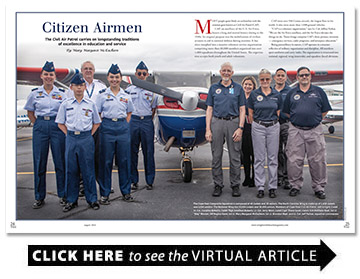Citizen Airmen
The Civil Air Patrol carries on longstanding traditions of excellence in education and service
BY Mary Margaret McEachern
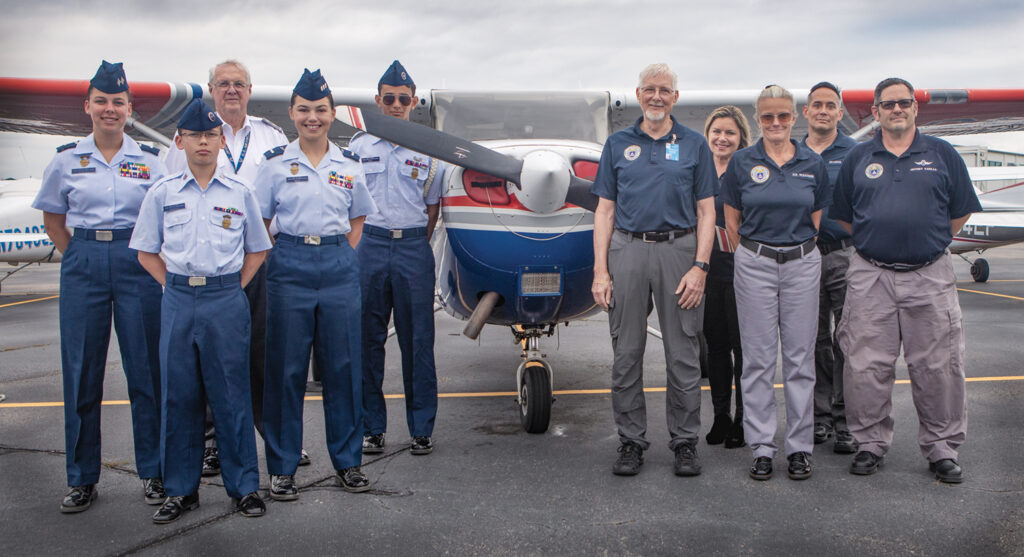
Most people quite likely are unfamiliar with the aviation gem known as Civil Air Patrol (CAP).
CAP, an auxiliary of the U.S. Air Force, boasts a long and storied history dating to the 1930s. Its original purpose was the mobilization of civilian aviators to aid in national defense during wartime. It has since morphed into a massive volunteer service organization comprising more than 60,000 members organized into over 1,400 squadrons throughout the United States. The organization accepts both youth and adult volunteers.
CAP owns over 550 Cessna aircraft, the largest fleet in the world. It also owns more than 1,000 ground vehicles.
“CAP is a volunteer organization,” says Lt. Col. Jeffrey Farkas. “We are the Air Force auxiliary, and the Air Force dictates the things we do. Those things comprise CAP’s three primary missions — emergency services, cadet programs, and aerospace education.”
Being paramilitary in nature, CAP operates in a manner reflective of military organization and discipline. All members sport uniforms and carry ranks. The organization is structured into national, regional, wing (statewide), and squadron (local) divisions.
The Wilmington division, the Cape Fear Composite Squadron, comprises 35 adult members (seniors), and 45 youth members (cadets). The Cape Fear squadron flies its Cessna 172, based at Modern Aviation in Wilmington, conducting educational flights, pilot training, and crew training.
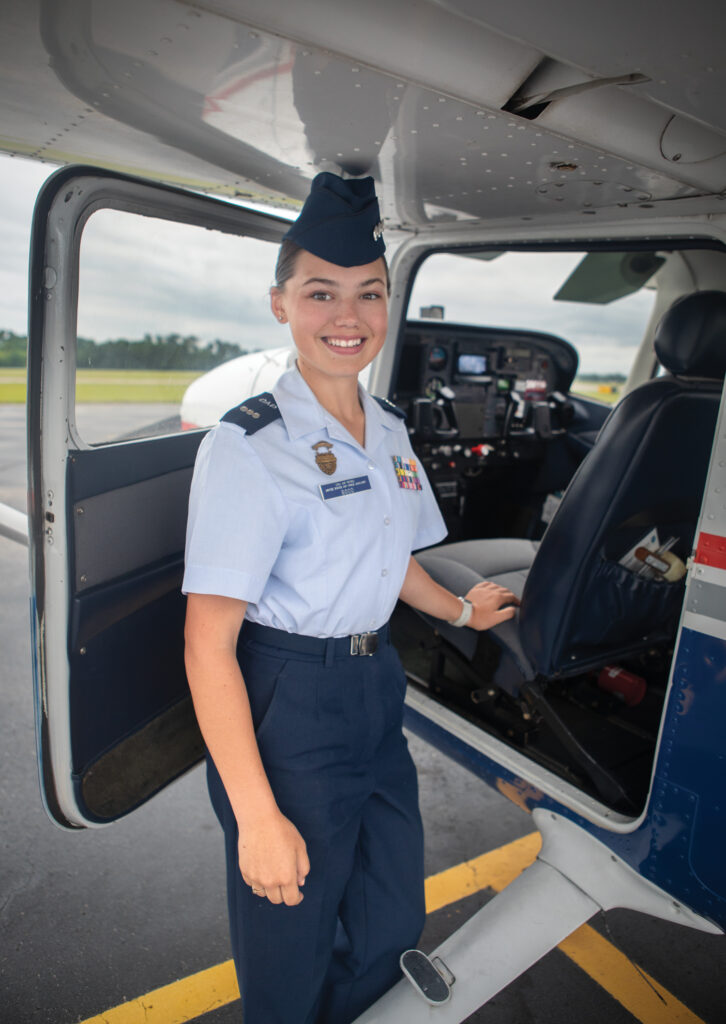
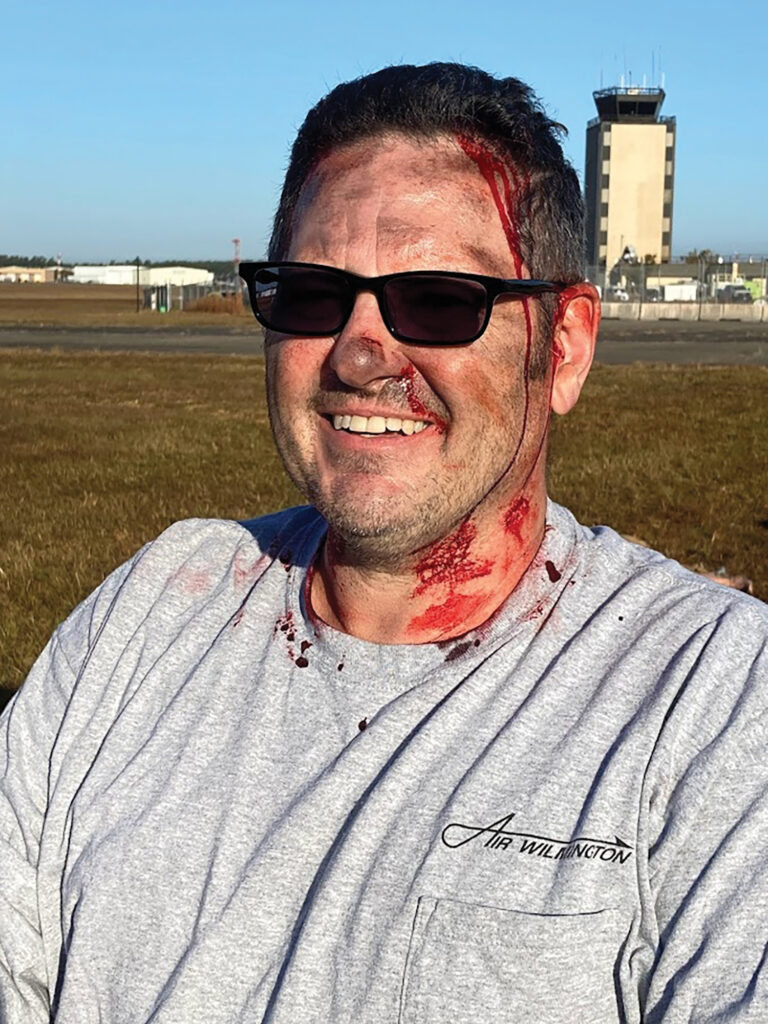
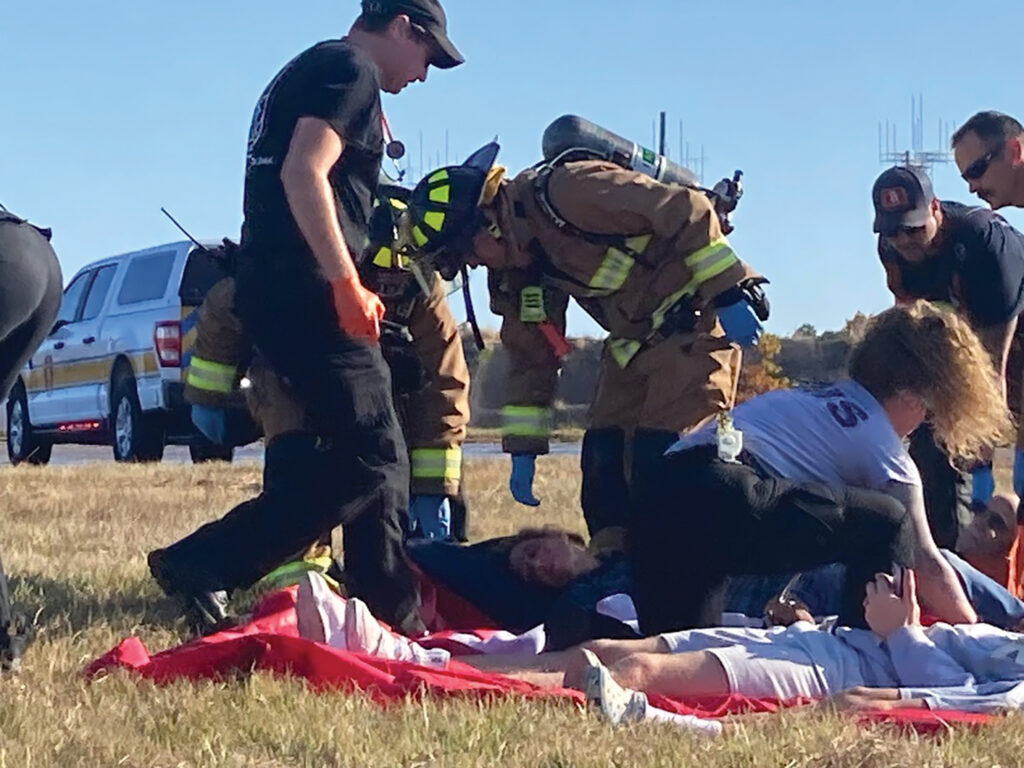
Senior members represent all backgrounds and occupations. The organization accepts pilots and flight instructors in positions such as cadet orientation pilot, mission pilot, flight instructor, and pilot examiner. A pilot certificate is not required to join CAP. Nonpilots are needed to perform ground support, and for cadet education on a variety of subjects. Cadet parents often join as senior members and perform numerous important duties.
Farkas, retired U.S. Army, works as a flight instructor and charter pilot out of Wilmington. After joining CAP 12 years ago, he serves the squadron as flight instructor and check pilot.
“I joined because they were looking for pilots, but I stayed because of the cadets,” he says.
A military retiree, Farkas relates well to CAP’s structure and discipline, which teach valuable skills and instill values in the cadets.
“Everyone knows about the scouts,” he says. “No one knows about CAP.”
The cadet program is fully integrated, comprising both male and female youth.
“Virtually any kid can join CAP provided you are 12 to 18 and can make the weekly meeting. There is a small joining fee, and some modest expense for uniforms. Once a cadet, you can stay a cadet until age 21, when you convert to a senior member. There are advantages to remain a cadet; we’ve got at least two former cadet commanders in college now (Duke and Liberty, I believe),” says 1st Lt. Reginald “Reg” Weaver.
An airport designer and engineer by trade, Weaver leads the squadron’s aerospace education program. A private pilot himself, Weaver saw CAP as a great fit and a wonderful way to give back in retirement.
“We want to attract new members,” Weaver says. “Our newest program, Learn to Fly, is aimed at educating cadets in the aerospace knowledge elements required for private pilot certification.”
Weaver, along with other senior volunteers, including certificated aviation ground instructors, conducted the first such course over several months beginning in fall 2023. The course covered all required areas of study, including risk management, basic aerodynamics, airport operations, airplane systems and instruments, airplane performance characteristics, federal aviation regulations, aviation weather, and navigation. The course, which would normally cost several hundred dollars, is offered free to cadets.
Other aerospace education programs include field trips to local fly-ins, seminars, airshows, fire service demonstrations, paper airplane flying contests, aircraft metal working seminars, air traffic control tower tours, and more.
The current highest-ranking cadets in the squadron are female. There is a higher-than-average number of home-schooled cadets.
Every cadet is entitled to five orientation flights, “O-Rides,” each about 45 minutes long where they can take the controls once at altitude.
“We often head out to Wrightsville Beach, maybe up towards Topsail, then run down to Bald Head or Oak Island, then back up the river to ILM,” Weaver says.
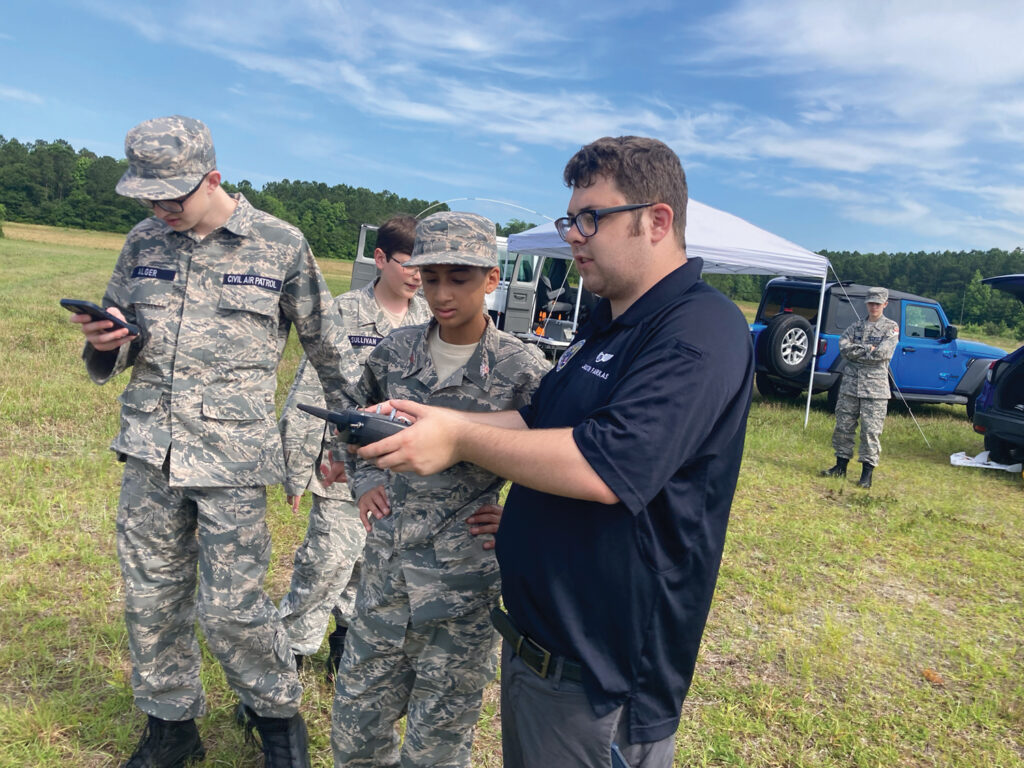
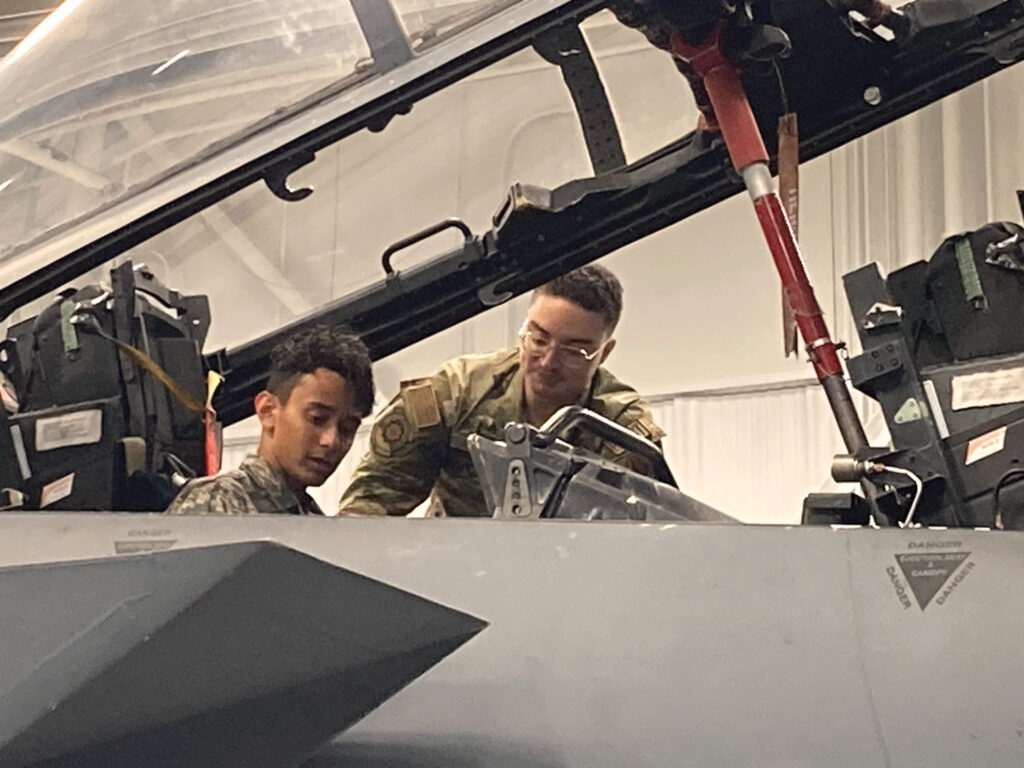
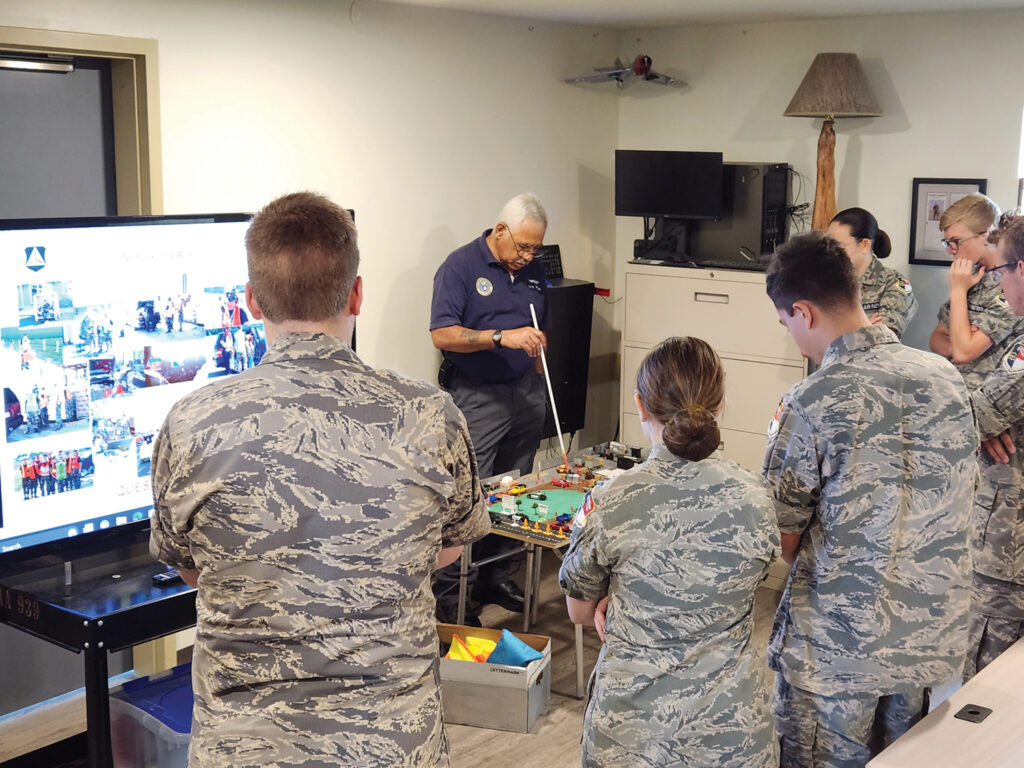
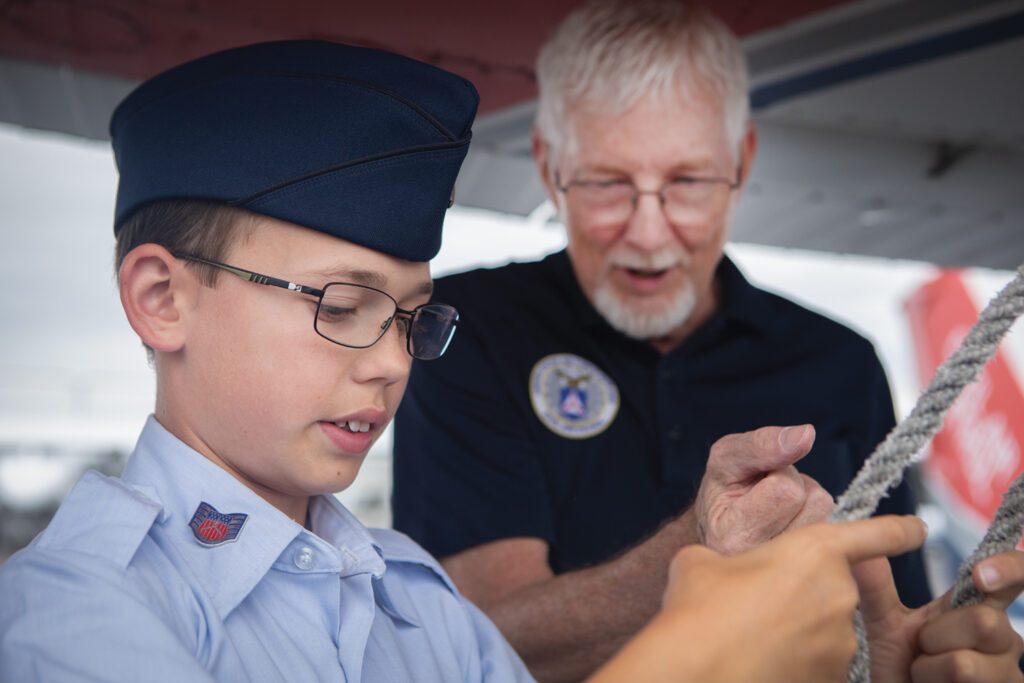
Multiple options for STEM programs are offered and include pilot ground school and flight training, scientific data gathering missions, rocketry, radio control aircraft, a cyberpatriots program, the learn to fly program, and more. Cadets are provided with STEM kits free of charge.
“Aerospace education is not just for the cadets but is also aimed at senior members and the community at large,” says Farkas. “We want to build on what the squadron does for the community by participating in airport events like ILM’s semi-annual general aviation day event.”
Teachers can join as aerospace education members (AEM). They don’t wear uniforms or attend squadron meetings, but they can order free STEM kits for their schools. They can also get O-Rides like the cadets as a part of the teacher orientation program, TOP Flights.
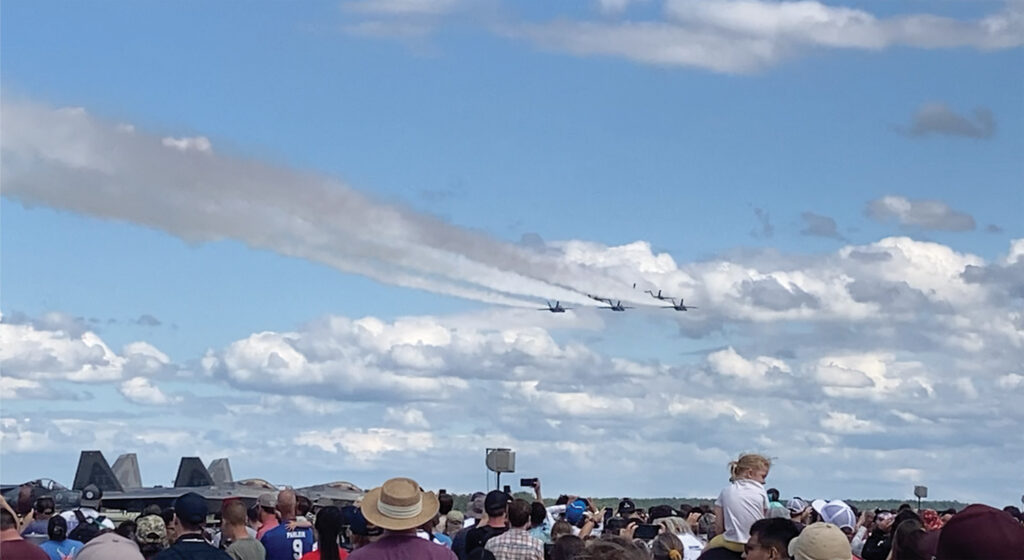
“We signed up a teacher at Williston Middle School and she just completed her TOP Flight with what I describe as that ‘CAP grin,’ it could not be washed off,” Weaver says. “These free flights are available to any primary educator in the Wilmington area.”
“CAP’s cadet program fosters mentorship, leadership, and service,” says Farkas. “Cadets learn to mentor other cadets, and approximately 60 percent of cadet programs are led by cadets.”
Cadets participate in aerospace education, character development, and rigorous drill and physical fitness activities to Air Force standards.
“Cadets are incentivized to advance,” says Farkas. “Fewer than one-half of 1 percent of cadets attain the highest achievement award offered by CAP. By comparison, 12 percent of Boy Scouts attain Eagle Scout status.”
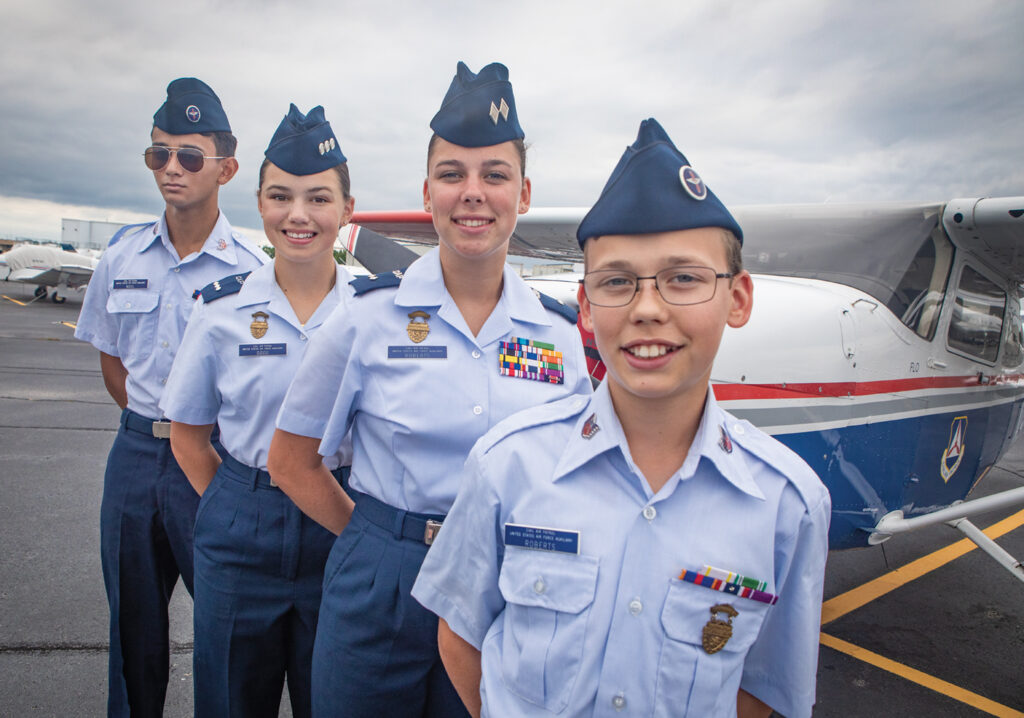
Each year, 350 cadets attend the North Carolina wing’s encampment program, an intense military-style training camp, required to advance in rank.
CAP’s other primary mission, emergency services, encompasses real-world scenarios and opportunities to save lives.
“We are not first responders, and 911 doesn’t call us in immediately,” says Farkas. “We provide additional manpower when local emergency response teams need help from individuals with special skill sets.”
The emergency services are mostly disaster response, and search-and-rescue for lost aircraft and missing persons.
“We periodically train for search and rescue through an exercise known as SAREX,” says Farkas. “We train ground teams, urban direction-finding teams, and aerial teams.”
CAP also provides aerial photography services during disasters to aid relief.
“CAP took the pictures of the Twin Towers on Sept. 11, 2001, and the recent Hawaiian wildfires,” says Farkas. “Additionally, CAP members serve as points of distribution for food, water, blankets, and the like for disaster-stricken areas.”
Membership requires only that the prospective member first attend three squadron meetings and then make a modest annual dues payment.
The squadron meets each Monday evening at the airport. Meetings generally center around subjects such as emergency services, character development, and aerospace education. Both seniors and cadets may be awarded and promoted in rank for completing online knowledge courses and achieving other goals within the squadron.
One of its most decorated members, Col. Jerry West, plans to retire from the squadron after more than 20 years’ service.
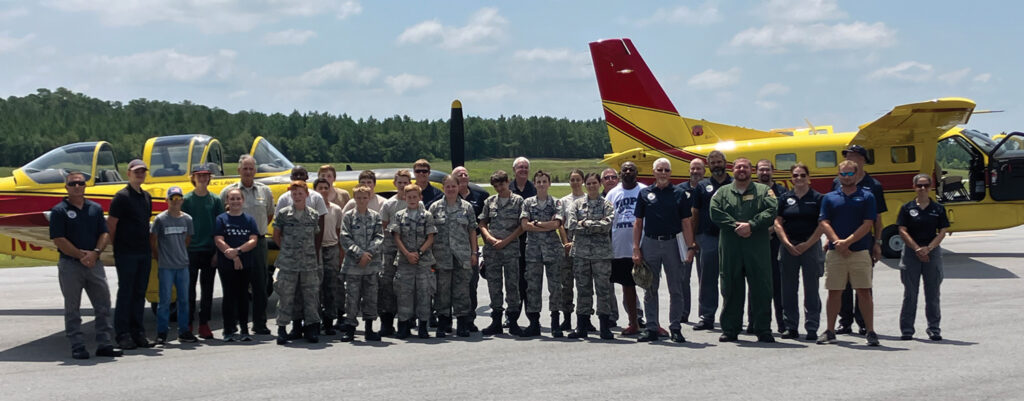
“Jerry is an amazing person,” says Farkas. “He retired from the Air Force as a full colonel and flew U-2 spy planes.”
Col. West is an inspiration to all squadron members. He keeps meetings organized and encourages participation in service to veterans, like Wreaths Across America.
The Brunswick County Composite (meaning seniors and cadets) Squadron meets at the Cape Fear Regional Airport. Although called Southport, the airport address is Oak Island.
Together, these squadrons hold down the biggest part of southeastern North Carolina. Both squadrons have CAP airplanes, which is considered unusual. They cooperate with resources and events, including four Brunswick cadets and two seniors who joined the Cape Fear Squadron for the solar eclipse mission in April, where they collected data for NASA.
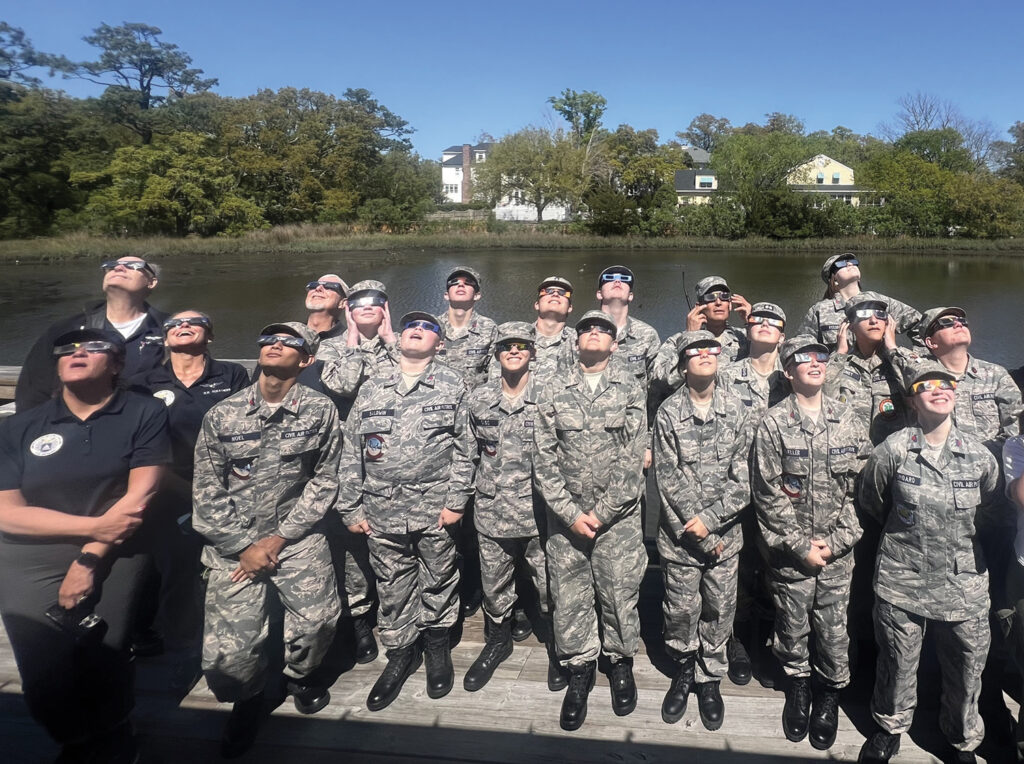
“I met one of their seniors at Smithville Park to get my first official drone instruction flight. These are highly capable drones,” Weaver says.
Upon joining CAP, members quickly learn that it can be a full-time job. It is, however, a volunteer organization and members can choose to be more or less active as dictated by preference.
While serving their community, members young and old learn new skills, forge lasting friendships, and enrich their lives in countless ways.
